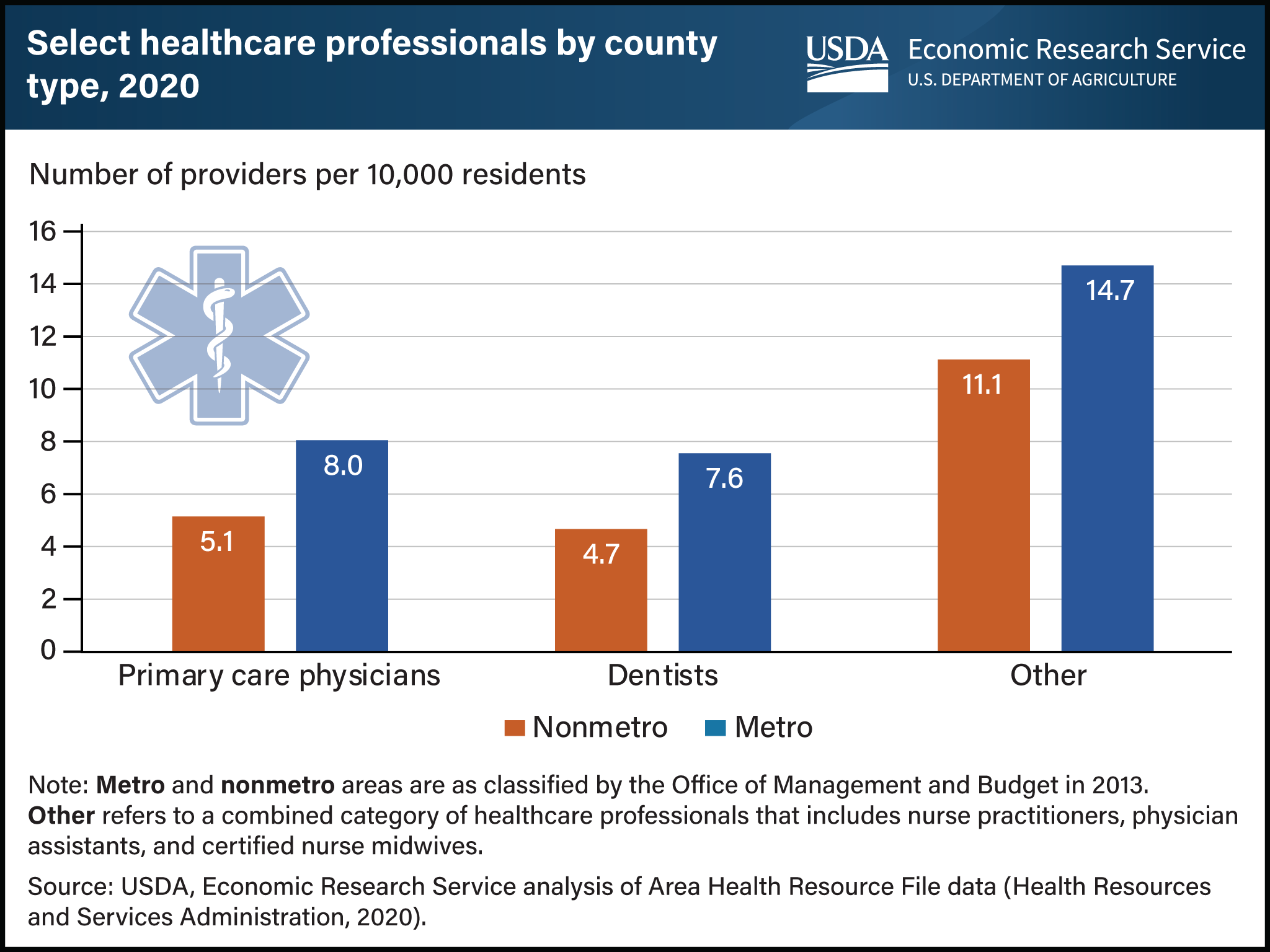Availability of healthcare providers in rural areas lags that of urban areas
- by John Pender
- 4/3/2023

The availability of healthcare professionals in rural areas lags that of urban areas. As of 2020, rural (nonmetro) areas recorded 5.1 primary care physicians per 10,000 residents, while the number in urban (metro) areas was 8.0. Similarly, the number of dentists was 4.7 in rural areas compared with 7.6 in urban areas, while the number of nurse practitioners, physician assistants, and certified nurse midwives was 11.1 in rural areas compared with 14.7 in urban areas. Lower availability of primary healthcare services has been associated with a higher likelihood of poor health and lower life expectancy. Healthcare services are important not only for people’s health, but also for rural economies. Further, the healthcare services sector is one of the largest and most rapidly growing economic sectors across all parts of the United States. This chart appears in the Economic Research Service report, Linkages Between Rural Community Capitals and Healthcare Provision: A Survey of Small Rural Towns in Three U.S. Regions published in March 2023.
We’d welcome your feedback!
Would you be willing to answer a few quick questions about your experience?

